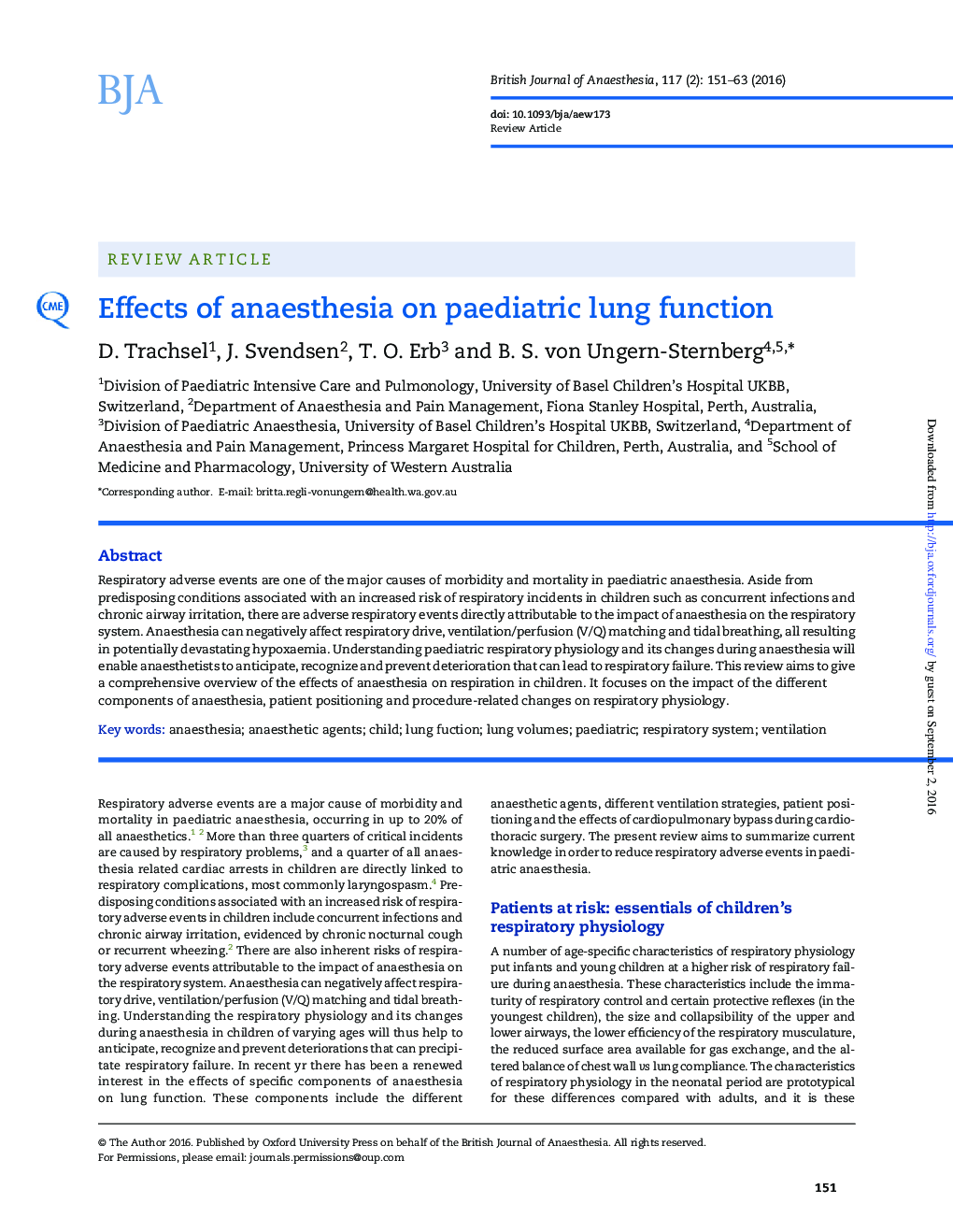| Article ID | Journal | Published Year | Pages | File Type |
|---|---|---|---|---|
| 8930706 | British Journal of Anaesthesia | 2016 | 13 Pages |
Abstract
Respiratory adverse events are one of the major causes of morbidity and mortality in paediatric anaesthesia. Aside from predisposing conditions associated with an increased risk of respiratory incidents in children such as concurrent infections and chronic airway irritation, there are adverse respiratory events directly attributable to the impact of anaesthesia on the respiratory system. Anaesthesia can negatively affect respiratory drive, ventilation/perfusion (V/Q) matching and tidal breathing, all resulting in potentially devastating hypoxaemia. Understanding paediatric respiratory physiology and its changes during anaesthesia will enable anaesthetists to anticipate, recognize and prevent deterioration that can lead to respiratory failure. This review aims to give a comprehensive overview of the effects of anaesthesia on respiration in children. It focuses on the impact of the different components of anaesthesia, patient positioning and procedure-related changes on respiratory physiology.
Related Topics
Health Sciences
Medicine and Dentistry
Anesthesiology and Pain Medicine
Authors
D. Trachsel, J. Svendsen, T.O. Erb, B.S. von Ungern-Sternberg,
